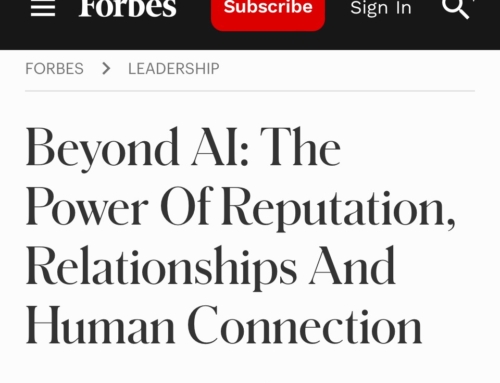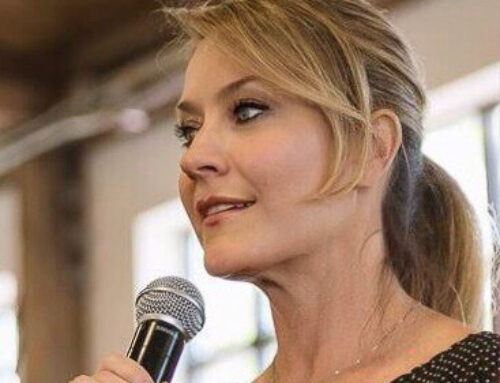As published in Forbes.
The human mind wanders. A lot. Almost a decade ago the Harvard Gazette reported that 47% of the time we are thinking about anything and everything other than what we are actually doing! In 2014, TIME reported that the average attention span, thanks to advances in technology, topped out a whopping eight-seconds, citing the attention-grabbing headline, You Now Have a Shorter Attention Span Than a Goldfish. However, apparently (but not surprisingly) many of us were too distracted to register these findings, as two years later they were reported again by the New York Times.
Clearly, our monkey minds are alive (and not entirely well). Mindfulness, which might be best defined as the ability to give our full attention to what it is we are doing, is now billion-dollar industry! This October, Europe hosted its first conference focused on how we can best incorporate mindfulness into our organizations, but I digress.
With our minds so easily distracted and the pings from our “smart” phone only making matters worse, it is no wonder we misinterpret, misunderstand, or completely miss entire communications we ought to have received. It is also why others fail to act upon the vision, values, and instructions we have given: I don’t understand— I explicitly shared this with them. Why didn’t they get it? said everyone who has ever tried to accomplish a task through others.
Years ago, I had the honor of working with Ron Crossland and the late Boyd Clarke. Their book, The Leader’s Voice (SelectBooks, 2008), is based upon more than a decade of neurological research of how the human mind works and how we, as leaders, can most effectively communicate to get results. In it, they state that the communication gap is not actually a gap, but a gigantic chasm! Senior leaders often rate themselves as top communicators, placing themselves in the 80% percentile. Unfortunately, their constituents usually find them to be highly ineffective, placing them in the bottom 20% percentile of effectiveness.
It seems we all must become better communicators, both written and verbal, in order to create greater understanding and alignment, and ultimately produce more successful and focused results. But how exactly do we do this, given most of us are under the illusion we already communicate quite well?
In my work, I have found one particular concept is always relevant and my clients immediately grasp how to apply it. This idea is artistic unity.
Every great work of art is said to have artistic unity, meaning that everything in the painting or music composition is there for a reason. It contains nothing more and nothing less than what the artist intended. For example, if a painting has a little red bike in the left-hand corner, it is not there by accident. The painter didn’t just throw it onto the canvas haphazardly, but rather placed it there for a very particular reason, its presence meant to foster an emotion or reaction in the viewer.
This desire and discipline to create a very specific experience for others must also be present in our communication as leaders. We can’t just share whatever we are thinking as we are thinking it, because words have incredible power and too many will take our thoughts as directions. Similarly, we can’t show up, start talking, and hope that our main message becomes clear to us and others as we speak. The stakes are too high.
If we share too many words, stories, or examples, we force our audience to drink from a fire hose, and then leave them trying to discern what is important from what isn’t.
This is our job, not theirs.
And we wonder why those we work with and through are unclear, confused, and frequently overwhelmed.
Alternatively, if we fail to include enough critical information and important contextual details as they arise, we will most certainly blindside others. And without appropriate inspiration, humanity, and emotion, we underwhelm or bore our audience. As Clarke and Crossland used to say, “the facts aren’t boring but you might be!”
Mastery in communication requires that we take the time to think about the one main message that we need others to understand, agree with, and act upon. We then prepare ourselves in order to best communicate it, selecting the right medium, the precise language, and the exact story, example, or analogy so as to break through the noise and distractions in our audience’s external and internal worlds.
Exceptional leadership communication happens with personal reflection, organization (taking the time to write down our key points), and practice (voicing it out loud several times to ensure it comes out as we intend).
Achieving artistic unity sounds simple but takes incredible discipline. While you marvel at the simplicity of a great TED Talk, appreciate that the speaker invested perhaps 10,000 hours to deliver a message we could understand and readily use.
Whether you have an important one-on-one conversation tomorrow or an all-hands meeting next week, schedule time with yourself to consider:
- Who is my audience? You likely have multiple audiences, so who needs which message, exactly?
- What is their current frame of reference? What do they most care about? Where are they focused currently? What needs to be your first point of connection?
- What do they need to know? Give them that: nothing more and nothing less (i.e., tell others what time it is, not how to build a watch. Building the watch is your job.)
- Think like a newspaper reporter: your headline needs to say it all, in a sentence. The subhead needs to say it all again, with a little more detail. Finally, for those who want or need the complete story, your full report provides all the remaining pertinent information.
If you seek to reach your next level as a leader, you must tighten up your communication—up, down, and across your organization. Everything you say and do matters and has an impact.
The further you progress up the organizational ladder, the more intentional you need to be in what, how, and when you share.
This is the discipline behind all great masters.






